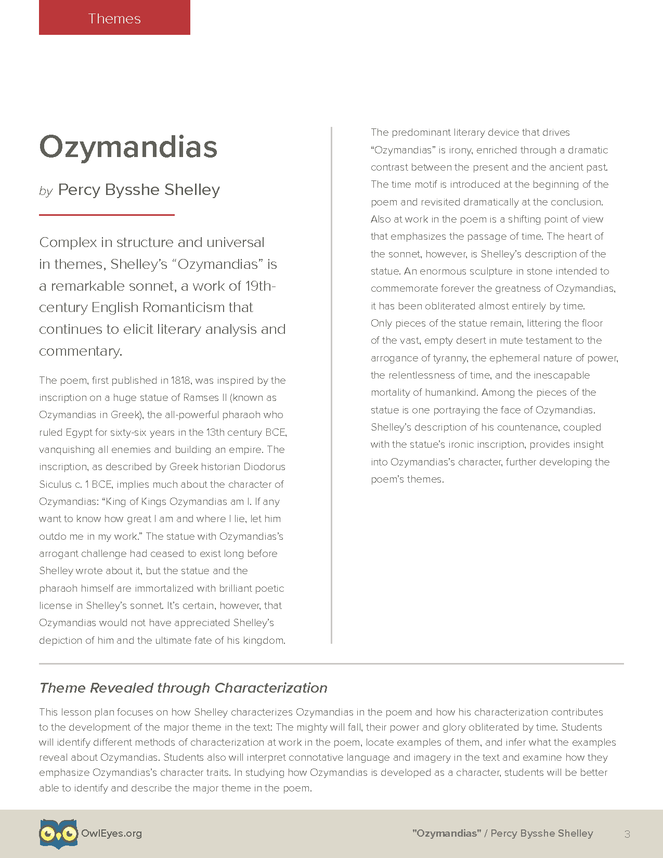
Hyperboles are used to express how the meaning of the poem is how power is not eternal. Now that we've seen how personification contributes to the meaning of the poem, let's look at hyperboles affect it. The 'shattered visage 'shows how this once feared figure is destroyed and has power no more. The frown, wrinkled lip, and sneer of the statue give life to this. Ozymandias was feared by many and most likely prideful and arrogant because of this. Now a statue can't actually wrinkle its lips and sneer, but the personification of this is used to show the loss of power. The line ' a shattered visage lies, whose frown, and wrinkled lip, and sneer of cold command,' (4 and 5) also show how Shelly creates the poems definition of power being able to expire.


This shows how power that may be there now does not always last. These two 'legs' that were once whole and strong are now 'trunkless' or broken. Stone can be associated with something strong. This is used to portray how power does not last forever because of the stone. This is an example of personification because it is giving the qualities of legs and standing to the lifeless object of stone. These 'legs of stone' refer to part of the statue king Ozymandias had made for himself years ago. An example of this can be seen in the line ' two trunkless legs of stone stand in the desert' (lines 2 and 3). Shelly uses personification to help portray this theme of 'power' and it not lasting forever.

This can be seen throughout the poem through personification, hyperbole, and irony. The poem 'Ozymandias' is about how power isn't permanent. This poem, however, has a deeper meaning than just the story of a traveler and what he saw on his adventure. A king who once ruled and was feared by many. 'Ozymandias' tells a story of a traveler who saw a fallen statue of king Ozymandias.


 0 kommentar(er)
0 kommentar(er)
